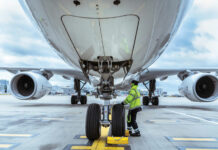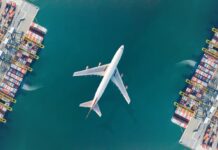

US carrier 21Air only launched 18 months ago to move fresh and perishable cargo domestically within the US and internationally with two 767-200ER freighters.
The airline’s success can be measured, according to 21Air new business development director, Rodrigo De Narvaez (pictured), in a massive expansion later this year. He says: “We are in the process of incorporating into the fleet three DC10-30Fs in the first semester of 2018.” Changing expectations of shoppers, whether buying online or in bricks and mortar establishments, is impacting perishables logistics, considers De Narvaez.


He says: “Change is coming, no doubt. Growers will have to change their packing, transportation will have to change the way they palletise and transport, airlines will have to change the way they calculate the flight yield, Customs will need to globalise in detail, importers and wholesalers will have to adapt and change their performance and service and small retailers will need to be able to compete in a very aggressive and review oriented market.
“Customers understand that logistics and Customs barriers have faded, global availability at their fingertips calls for experimentation, internet and TV access to exotic food shows and recipes invite customers to look beyond their traditional food, millennials are great travellers and are exposed to all kinds of food that they want to be able to have in their diet.”
21Air is a perishables-driven airline with daily flights from Bogota and Medellin to Miami with an average of 120 tons of flowers per day.
From Peru the cargo is mainly asparagus from July through March, mangoes from November to March and other products such as ginger, fish, grapes, pomegranates and avocados complete the list. It carries many non-traditional perishables such as pharma, cosmetics, time and temperature-critical equipment. De Narvaez maintains that instead of flying Europe’s perishable imports via the Netherlands, leisure flights between South American and the Caribbean to Europe are more efficient and allow for higher margins.
He says: “Passenger airlines historically base their revenue in their seat occupation. Lower decks to leisure destinations normally are not considered. Using this extra capacity and providing the airlines with an extra income has proven not only to be attractive to the airline but has proven decisive to maintain longer seasonal flights.
“Logistics and transit times once addressed and professionally managed makes this a safe, economical and realistic alternative to destinations that are in high demand and have very little additional capacity for growth.”
Very different buying habits in the US and Europe have had an impact on perishables logistics, De Narvaez says. “Buying habits determine packing, ripeness, cut stage, units per box, shelf life needs, quality guarantee and price flexibility,” he says. “European customers buy more times a week, are exposed to products more times as well and buy more times but in smaller quantities. This brings fresher product to the table, riper product and is held in the fridge for less number of days. Logistics have to be faster and leaner.
“Logistics has to have more trained personnel, mistakes such as needing repacking are expensive and fulfilment suffers. Customers have the opportunity to try products in smaller quantities therefore things that are affected by the transportation such as appearance; box, bag crushed or dirty become important.
“Perishables are no longer determined just by temperature. Today we have perishables due to time, to mechanical injury, opportunity and many other criteria. A perishable is anything that will lose its value in the logistics chain. “Take a newspaper, if you don’t get it before 7am it is dead by noon, old news, a loss of effort, resources and money. A newspaper therefore has lost all of its value and therefore a perishable product.”
De Narvaez bats off environmentalists’ concerns as to airfreighting foodstuffs. He says: ”Flying has proven to have a smaller carbon imprint on the product than trucking. More efficient engines are coming into the market and are being adopted by the airlines for four reasons; they are more efficient, they last longer, they are less expensive to maintain, and the carbon imprint and emissions is very low.
“Flying asparagus makes sense since not everywhere can produce the yields achieved in the current production areas. Peru has invested great sums to excel. He adds: “Probably the biggest change in the asparagus growing has been Peru proving to the world that a change in the way you address the cultivation was needed, something as big as changing tons of manure per hectare to parts per million per plant. It is agriculture versus science.”













